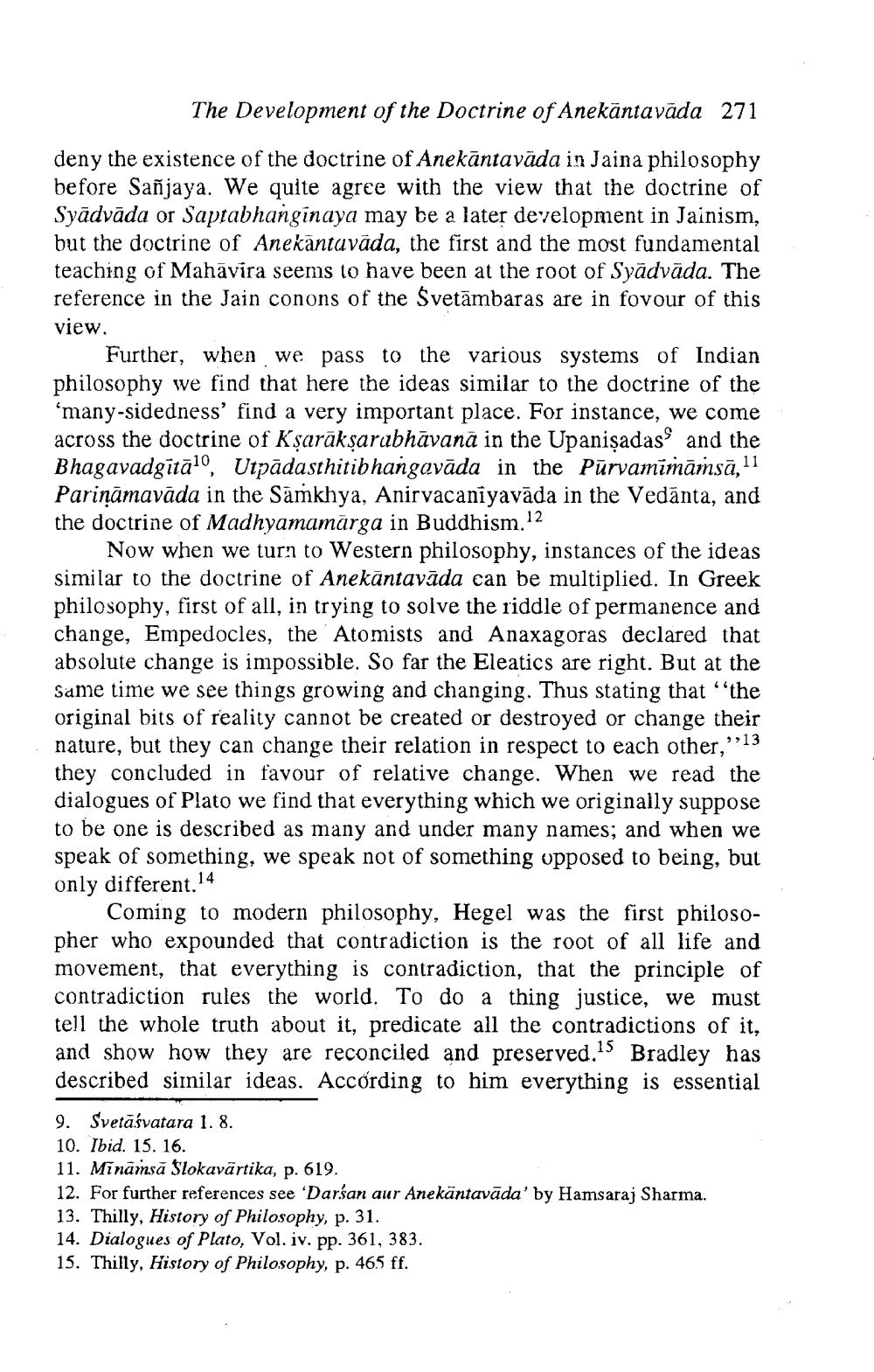________________
The Development of the Doctrine of Anekāntavāda 271 deny the existence of the doctrine of Anekāntavāda in Jaina philosophy before Sañjaya. We quite agree with the view that the doctrine of Syádváda or Saptabhanginaya may be a later development in Jainism, but the doctrine of Anekantavāda, the first and the most fundamental
aching of Mahavira seems to have been at the root of Syadvāda. The reference in the Jain conons of the Svetāmbaras are in fovour of this view.
Further, when we pass to the various systems of Indian philosophy we find that here the ideas similar to the doctrine of the ‘many-sidedness' find a very important place. For instance, we come across the doctrine of Ksaräksarabhāvana in the Upanisadass and the Bhagavadgitāly, Utpādasthitibhangavāda in the Pūrvamīmāmsā, 11 Parināmavada in the Samkhya, Anirvacaniyavāda in the Vedānta, and the doctrine of Madhyamamarga in Buddhism.12
Now when we turn to Western philosophy, instances of the ideas similar to the doctrine of Anekāntavāda can be multiplied. In Greek philosophy, first of all, in trying to solve the riddle of permanence and change, Empedocles, the Atomists and Anaxagoras declared that absolute change is impossible. So far the Eleatics are right. But at the Same time we see things growing and changing. Thus stating that the original bits of reality cannot be created or destroyed or change their nature, but they can change their relation in respect to each other,"13 they concluded in favour of relative change. When we read the dialogues of Plato we find that everything which we originally suppose to be one is described as many and under many names, and when we speak of something, we speak not of something opposed to being, but only different.14
Coming to modern philosophy, Hegel was the first philosopher who expounded that contradiction is the root of all life and movement, that everything is contradiction, that the principle of contradiction rules the world. To do a thing justice, we must tell the whole truth about it, predicate all the contradictions of it, and show how they are reconciled and preserved.15 Bradley has described siinilar ideas. According to him everything is essential 9. Svetāśvatara 1.8. 10. Ibid. 15. 16. 11. Minamsā Slokavārtika, p. 619. 12. For further references see 'Darśan aur Anekāntavāda' by Hamsaraj Sharma. 13. Thilly, History of Philosophy, p. 31. 14. Dialogues of Plato, Vol. iv. pp. 361, 383. 15. Thilly, History of Philosophy, p. 465 ff.




